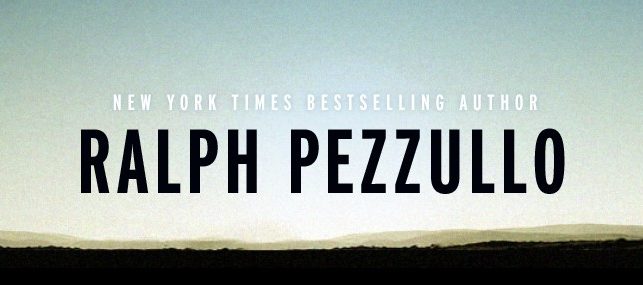For writers immersed in the world of thrillers and nonfiction, finding inspiration from the literary classics is an essential part of honing their craft. These timeless works, often revered for their compelling narratives and thought-provoking themes, offer a rich tapestry from which writers can draw inspiration and insights. In this article, we delve into a selection of classic titles that every thriller and nonfiction writer should consider reading during their spare time. These literary gems have withstood the test of time, captivating generations with their masterful storytelling and deep exploration of human experiences.
Exploring the Dark Depths: Classic Thrillers That Continue to Intrigue
“The Count of Monte Cristo” by Alexandre Dumas:
A tale of revenge, betrayal, and redemption, this classic masterpiece weaves a gripping narrative filled with suspense, mystery, and psychological depth.
“Dracula” by Bram Stoker:
A gothic horror novel that introduced the iconic vampire Count Dracula, it combines elements of suspense, terror, and the exploration of the human psyche.
“And Then There Were None” by Agatha Christie:
A quintessential locked-room mystery that follows ten strangers trapped on an isolated island, this novel keeps readers guessing until the very end.
“The Adventures of Sherlock Holmes” by Arthur Conan Doyle:
A collection of short stories featuring the brilliant detective Sherlock Holmes, each offering intricate puzzles and captivating mysteries to unravel.
Real-Life Tales Unveiled: Classic Nonfiction Works for Deeper Understanding
“In Cold Blood” by Truman Capote:
Blending the elements of true crime and literary craftsmanship, Capote tells the chilling story of a brutal murder in rural Kansas, exploring the depths of human nature and the consequences of violence.
“The Diary of a Young Girl” by Anne Frank:
A poignant and introspective account of Anne Frank’s life in hiding during the Holocaust, offering a powerful perspective on resilience, hope, and the atrocities of war.
“The Immortal Life of Henrietta Lacks” by Rebecca Skloot:
Merging science, ethics, and personal narratives, this book delves into the story of Henrietta Lacks, whose cells were unknowingly used for medical research, raising important questions about medical ethics and the exploitation of marginalized communities.
“Guns, Germs, and Steel” by Jared Diamond:
An ambitious work that explores the interconnected factors shaping human history, from geography and ecology to technology and societal structures, offering a fresh lens through which to view the world.
The Intersection of Fact and Fiction: Classic Works That Blur the Boundaries
“Moby-Dick” by Herman Melville:
Although primarily known as a literary fiction novel, this epic tale of Captain Ahab’s obsession with hunting down the white whale blurs the boundaries between fiction and nonfiction, incorporating elements of real-life whaling practices and marine biology.
“Into the Wild” by Jon Krakauer:
A gripping nonfiction account of Chris McCandless’s journey into the Alaskan wilderness, intertwining his personal story with the exploration of nature, self-discovery, and the pursuit of a life beyond societal norms.
“The Strange Case of Dr. Jekyll and Mr. Hyde” by Robert Louis Stevenson:
This novella explores the duality of human nature, blurring the lines between good and evil, and delving into the psychological depths of its characters.
Literary Giants of the Genre: Classic Thriller and Nonfiction Writers to Discover
Edgar Allan Poe:
Considered the father of the modern detective story, Poe’s works, including “The Murders in the Rue Morgue” and “The Tell-Tale Heart,” continue to influence the thriller genre with their atmospheric settings, psychological tension, and intricate plots.
Truman Capote:
Known for his meticulous research and narrative skills, Capote’s blend of nonfiction and literary techniques in works like “In Cold Blood” showcases his mastery in storytelling and his ability to captivate readers with true crime narratives.
Sir Arthur Conan Doyle:
With his iconic detective Sherlock Holmes, Conan Doyle set the benchmark for detective fiction, crafting intricate mysteries and creating a character who still resonates with readers today.
Mary Roach:
A contemporary nonfiction writer, Roach combines science, humor, and investigative journalism to explore fascinating and often overlooked topics. Her works, including “Stiff: The Curious Lives of Human Cadavers” and “Gulp: Adventures on the Alimentary Canal,” demonstrate her ability to engage readers with informative and entertaining narratives.
Timeless Inspiration: How Classic Works Shape the Modern Landscape
Classic thrillers and nonfiction works serve as pillars in the literary world, shaping the landscape for contemporary writers. These influential works have inspired countless authors, and their impact can be seen in modern works that continue to push the boundaries of the genres.
From the dark depths of Edgar Allan Poe’s macabre tales to the intricately crafted mysteries of Agatha Christie, the power of classic thrillers lies in their ability to captivate readers with timeless stories. These works have not only entertained but also paved the way for the evolution of the genre, influencing the narrative techniques, character development, and suspenseful pacing that continue to define contemporary thrillers.
Similarly, classic nonfiction works have left an indelible mark on the literary world, providing deep insights into the human condition and shedding light on significant historical events. These narratives serve as a reminder of the importance of storytelling in conveying real-life experiences and fostering empathy among readers.
Conclusion
In the world of thrillers and nonfiction, the classics hold a special place. These timeless works not only entertain and intrigue but also provide invaluable inspiration and insights for writers seeking to master their craft. From the depths of suspenseful thrillers to the enlightening narratives of nonfiction, these literary gems offer a wealth of knowledge, techniques, and storytelling prowess.
Aspiring writers, whether drawn to the art of crafting gripping fiction or unraveling real-life mysteries, can find a wealth of inspiration within these classics. By immersing themselves in the works of renowned authors and analyzing the techniques employed, writers can refine their skills, deepen their understanding of the genres, and create their own unique contributions to the thrilling world of literature. So, embrace the journey, explore the classics, and let the timeless gems guide you on your own path to becoming a master of thrillers and nonfiction.

